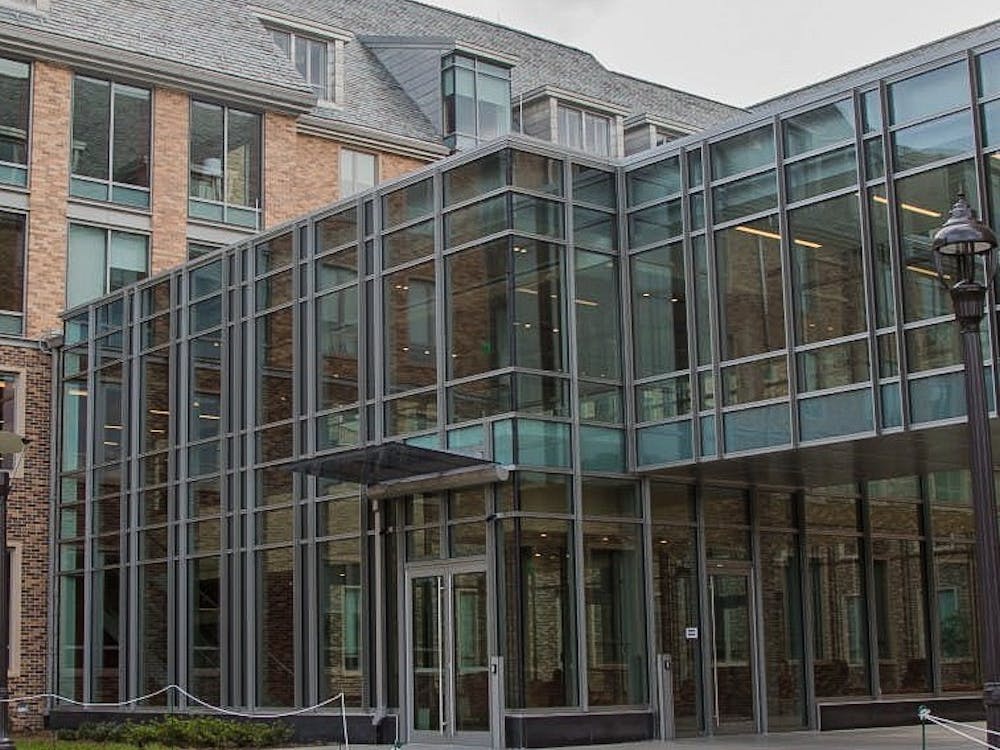If you ever thought that your move-in day was chaotic, imagine coordinating it for all of West Campus—and then adding an extra 700 people.
Move-in on West Campus is always a hectic affair, with thousands of students arriving over the course of more than a week to move into dorms spread across campus, many with limited parking access. This year, with the addition of 700 more undergraduates into the new Hollows Quad, the whole process became a bit more complicated.
The additional students were coming from the now-closed Central Campus, which had been particularly easy to organize move-in for. With easy street access and extensive parking lots, Central Campus required little extra planning to get students to their housing.
Thanks to the increased number of students, this year's West Campus move-in was particularly expensive. Total costs reached between $25,000 and $30,000, according to Joe Gonzalez, assistant vice president of student affairs and dean for residential life.
Most of that cost comes from increased staffing around move-in, which is coordinated by Parking and Transportation Services. Carl DePinto, director of Parking and Transportation Services, did not respond to a request for comment from The Chronicle.
The temporary Parking and Transportation staff helped coordinate traffic and parking spaces, particularly around the Towerview Drive traffic circle at the entrance to the Blue Zone, the largest collection of parking spaces on West Campus.
"We did need more [staffing] this year, as a result of the Hollows changing the volume—and we had to create another move-in area that needed a lot of staffing," Gonzalez said.
The extra staff managed the unloading zones to keep cars moving in and out without overstaying their welcome. They also help to manage traffic in other congested areas of West Campus, including the Blue Zone.
This year, everyone moving into dorms in Keohane Quad or the new Hollows Quad was herded into a move-in area along Wannamaker Drive, across Towerview Drive from the Blue Zone.
The use of the new area mostly worked out smoothly, but the system ran into issues Friday morning—the official start of move-in for the semester—as students flocked back to campus. Traffic was backed up for much of the morning as students and families waited for space to open up in the unloading zones outside the dorms, Gonzalez explained.
Although the initial rush to move-in was bigger this year, due to the higher volume of students, it's fairly routine that traffic piles up on the first morning, Gonzalez added.
"It's pretty common that we have people waiting when we open up the check-in process, and then once we get through that initial rush then it's just a trickle-in effect from there," he said.
Ideally, Duke would allow cars to naturally line up along streets around campus to wait for a spot to open up, Gonzalez explained, but the reality of move-in makes that plan difficult.
East Campus move-in brings a bigger rush to campus, but the short time window can actually make it easier to plan for, according to Gonzalez. Although some students move in early—athletes, scholarship recipients and marching band members among others—the majority of first-years arrive on campus during a narrow six-hour window.
The sudden rush of students gives Duke the chance to coordinate with the City of Durham and local police about street disruptions near East Campus. The predictability allows Duke to organize queues of cars waiting to unload, with coordinated lines leading up to dorms.
On West Campus, with move-in stretched out over more than a week, disrupting traffic for the entire window is not an option.
Instead, administrators are looking into new strategies for next year's move-in to avoid the slowdowns caused by Friday morning's overcrowding. Among other ideas, Gonzalez said that Duke might let students unload on Towerview Drive, which is currently discouraged, but not uncommon.
When asked about whether the University would consider assigning West Campus dorms specific move-in times—as the administration already does for East Campus—Gonzalez left the possibility open.
"Maybe it's an idea that does have merit and should be considered more fully, I just know that it's not one that we've tried," Gonzalez said.
Get The Chronicle straight to your inbox
Signup for our weekly newsletter. Cancel at any time.
Carter Forinash, Trinity '21, was the news editor for The Chronicle's 116th volume.

